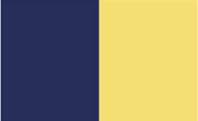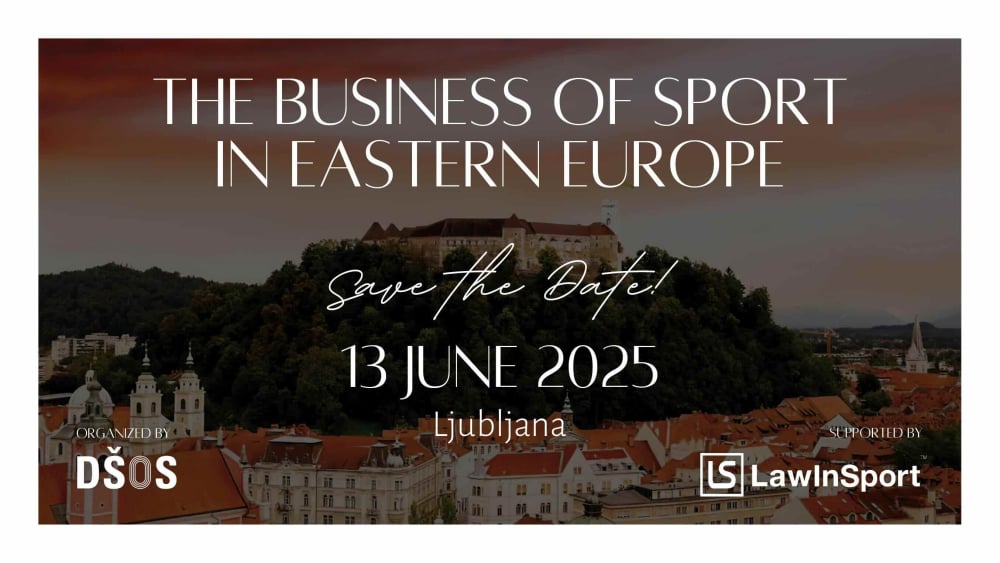Trade marks for sport events - How Wimbledon secured their colour mark - Episode 48
Friday, 07 July 2017Zane Shihab, partner at Kerman & Co LLP, and Manuela Macchi, partner at Keltie LLP, speak to LawInSport CEO, Sean Cottrell and Editor, Chris Bond about the importance of trade mark registration in sport and take review the merits of Wimbledon's successful registration of the purple and green colour mark.
For more podcasts, videos, articles, events and news focused sports law visit LawInSport.com or follow us on Twitter @LawInSport. You can follow the host Sean Cottrell on Twitter at @spcott.
It can be listened to on Soundcloud, iTunes or most Android podcast apps.
How colour trade marks were successfully registered on behalf of Wimbledon
This article was first published by Kerman & Co LLP and can be viewed here.
As Andy Murray lifted the legendary Wimbledon trophy (along with the mood of a beleaguered nation post-Euro 2016 debacle) and cast his eyes around an adoring Centre Court he will be forgiven for not paying attention to the carefully selected flower arrangements, the famous Wimbledon crossed-rackets logo or the stripes on Chairman Philip Brook’s tie.
If he had he will have noticed that they all had one thing in common, the colours green and purple.
As the official Wimbledon website at www.wimbledon.com explains, the “present colours — dark green and purple — were introduced in 1909 following the discovery that the previous Club colours of blue, yellow, red and green were almost identical to those of the Royal Marines”.
Whilst this historic and iconic colourway has been associated with The Championships for over 100 years, the Club has had to rely on the tort of passing-off (discussed further below) to prevent third parties from piggy-backing on the goodwill of The Championships by using those colours to imply an association with Wimbledon, when no such association exists.
However, on 24th June 2016 Kerman & Co were successful in registering the following colour trade marks (the “Colour Marks”) in the United Kingdom on behalf of The All England Lawn Tennis Club (Championships) Limited (the “Club”):
1. UK00003095405 (vertical green and purple stripe); and

2. UK00003097108 (horizontal green and purple stripe).

Classification
The Colour Marks were registered in the following classes:
- Class 16: Printed publication of books, stationery and diaries, all relating to tennis;
- Class 25: Tennis skirts; tennis shorts; tennis sweaters; hats, scarves, wrist bands, socks, all being tennis clothing;
- Class 38: Telecommunication or broadcasting of, and/or provision of access to, delayed and live tennis related video, audio-visual and audio content online or via means of a global computer network, including content accessible via wireless electronic communication devices; provision of access to information on websites, portals, social media, blogs relating to tennis (including events, event locations, maps, driving and transport directions, statistics and information on performances, all relating to tennis); all the foregoing services available from computer databases, the Internet, via wireless communication networks and via global communication networks; and
- Class 41: Producing, organising and staging tennis competitions; provision of tennis facilities; ticketing and event booking services relating to tennis events; provision of hospitality services and packages (entertainment) in relation to tennis events; production of pre-recorded and real-time radio and television coverage of tennis events over the Internet.
It is extremely important to accurately define the classes within which registration of all trade marks is sought. In this regard, applicants have to undertake a balancing act; on one hand they will want to ensure that the Classes specified are as wide as possible (so as to provide maximum protection in as many sectors as possible); on the other hand, the description has to be as precise as possible as the UK Intellectual Property Office (the “IPO”) will reject any trade mark applications that exhibit a vague or loose specification.
Thus, the classes detailed above represent how the Club currently uses the Colour Marks and will use the Colour Marks in the future.
Colour trade marks generally
The starting point is that a colour per se is not normally inherently capable of distinguishing the goods of a particular undertaking. Colours are usually features of a product, being part of the product’s external appearance and consumers are not in the habit of making assumptions about the origins of goods merely from their colour or the colour of their packaging. Therefore, in practice, applicants wishing to register colour or a combination of colours must overcome very difficult obstacles to prove that the sign is capable of being a trade mark.
It is for this reason that there are very few colours that have been registered as trade marks. Those that have been capable of registration include UPS (Pullman brown), Deutsche Telekom/T-mobile (magenta), Christian Louboutin (red, when applied to the sole of high heeled shoes), Tiffany & Co. (blue), Orange (orange, obviously) and Heinz (turquoise). However, the difficulties in registration are illustrated by the following examples:
1. IKEA
In May 2003, IKEA applied to the Office for Harmonisation in the Internal Market (“OHIM”) to register the following colour combination of blue and yellow as a Community trade mark (“CTM”):

The OHIM examiner rejected the application, finding that the mark was devoid of any distinctive character. This decision was upheld by the OHIM Board of Appeal in 2005.
2. Mars
Mars Inc. applied to register a purple-and-white colour mark as a CTM for various cat-related goods such as collars, beds, food and toys:

3. Cadburys
OHIM told Mars that the mark was not registrable, as the mark could not be represented graphically because the description of it was too vague. It lacked any systematic arrangement which associated the colours in a predetermined and uniform way. The sign could not, therefore, distinguish the applicant's goods from those of other traders, nor did it enable third parties to determine the scope of the rights under the mark. This decision was upheld by the OHIM Board of Appeal in 2005.

The procedure
In 2013, the Court of Appeal allowed Nestlé's opposition to Cadbury's application to register a particular shade of purple as a UK trade mark for chocolate as its formulation did not meet the registration requirements. The court considered that, as there was wrapped up in the description an unknown number of signs, it did not satisfy the requirement of "a sign", nor did it satisfy the graphical representation requirement as the unknown number of signs meant that the representation was not of "a sign." Consequently, the mark applied for lacked the required clarity, precision, self-containment, durability and objectivity to qualify for registration.
The process to register a colour mark can last months, sometimes years; an indication of the aforesaid complexities of obtaining a colour trade mark in this jurisdiction and throughout the World.
The procedure initially involves obtaining survey evidence, in this case in an attempt to illustrate that green and purple are the colours most predominantly associated with The Championships, Wimbledon.
It can be an uphill battle to convince the IPO that the colours, in isolation, act as an indicator of trade origin. For the Colour Marks, this necessitated the collation, and provision to the IPO, of a huge amount of pictorial and physical evidence (some of which dated back to the first half of the twentieth century). This was obtained by investigating the Wimbledon archives and museum, collecting numerous items from the Wimbledon Shop and scouring the grounds and internet. The evidence was accompanied by witness statements.
It is often the case (especially with institutions as longstanding as Wimbledon) that the use of colours has not always been consistent over the years. Therefore, personal hearings may be required in order to convince the IPO that the Colour Marks have distinctive character as a result of the use made of them in relation to the goods and services claimed. If it is likely that the consumer would see a colour trade mark first and foremost as a decorative feature rather than a brand emanating from a single source of origin then the trade mark application will fail.
Relative difficulty of protecting unregistered trade marks
If a mark is unregistered, the owner has to look to the common law for protection and must rely on a passing-off action to prevent infringement of the mark. Passing-off actions are notoriously time-consuming and expensive. To succeed in such an action, the proprietor must produce evidence of their ownership of goodwill or reputation in the mark, and evidence that the unauthorised use of his mark amounts to a misrepresentation which is causing, or is likely to cause, damage.
Gathering evidence to demonstrate that there is a misrepresentation, usually in the form of evidence of confusion (or a likelihood of confusion) is labour-intensive and costly, particularly where survey evidence is the only means of showing that there is confusion. Market research companies and experts will therefore be required.
Benefits of trade mark protection
A registered trade mark is:
- a valuable commercial asset;
- commercially exploitable;
- a deterrent to infringers;
- relatively easy to protect and enforce; and
- renewable indefinitely.
Registration of a trade mark gives "exclusive rights in the trade mark which are infringed by use of the trade mark in the United Kingdom without his consent" (section 9(1), Trade Colour Marks Act 1994 (the “TMA”)).
Registration therefore gives the proprietor the right to sue for trade mark infringement any person who uses an identical or similar mark in the course of trade in connection with identical or similar goods without authorisation. They will also need to show that the use has caused or is likely to cause confusion, except in cases of where the marks are identical and the goods or services are the same (section 10, TMA).
In the case of the Club, as the Colour Marks have a reputation (gained by years of use), there is also a right to prevent others from using the same or a similar sign for goods or services (whether similar or not), where that use leads to an unfair advantage or causes detriment to the Colour Marks.
Trade mark rights arise from the date of application for a UK mark (section 9(3), TMA). In order to remain in force, the Colour Marks must be renewed every 10 years.
To give some practical examples, a ticket resale website that attempts to piggy-back on the goodwill of The Championships by displaying the Colour Marks or anything similar to the Colour Marks (e.g. the green and purple colours adjacent to each other) can now be prohibited from displaying the Colour Marks in their course of trade and therefore prevented from associating itself with The Championships. Similarly, any tennis clothing, books, television broadcasts or tennis competitions that seek to use (without the Club’s authorisation) either of the Colour Marks in the design and/or promotion of the same will be unable to do so without fear of litigation.
Consumer protection
This is not only about protecting the rights of the trade mark owner. Clearly, the greater the ability of a proprietor to prevent the unauthorised use of its intellectual property, the greater the protection afforded to consumers by allowing them make an informed decision about the products and services that they purchase as they will have a better chance of deciphering whether such products and services are legitimate (i.e. in this case, officially endorsed by, or connected to, The Championships).
Use of colour trade marks in practice
For all colour trade mark owners, it is a necessity that, as far as possible, their trade marks are applied consistently (with respect to their positioning and specification) in each and every use.
In addition, for an event organiser such as the Club, brand guidelines should be updated to match precisely the description and specification of their trade marks so that official licensees are contractually obligated to use and display the trade marks consistently. Such trade marks should be included in all licences and there should be a positive obligation on official licensees to incorporate the trade marks into their products.
For the Club, although the use of the green and purple colours in significantly different proportions may not be protected by the TMA, the registrations will help in strengthening any passing-off cases that the Club may have against infringers.
Additionally, best practice dictates that, where possible, trade mark owners display:
- the ® symbol next to their registered trade marks; and
- an acknowledgment on publications that their registered trade marks are the registered trademarks of the trade mark owner,
to demonstrate that they are registered trade marks that belong to them and to warn others against using them.
Zane Shihab in Kerman & Co LLP's Sports team advised The All England Lawn Tennis Club (Championships) Limited on the above matter.



